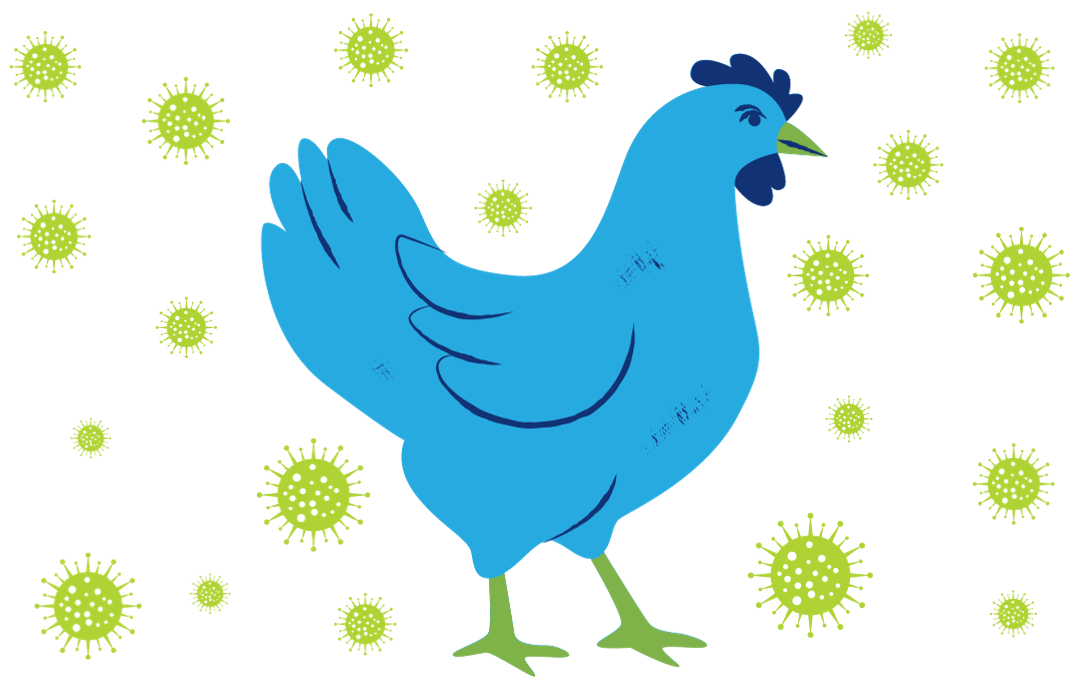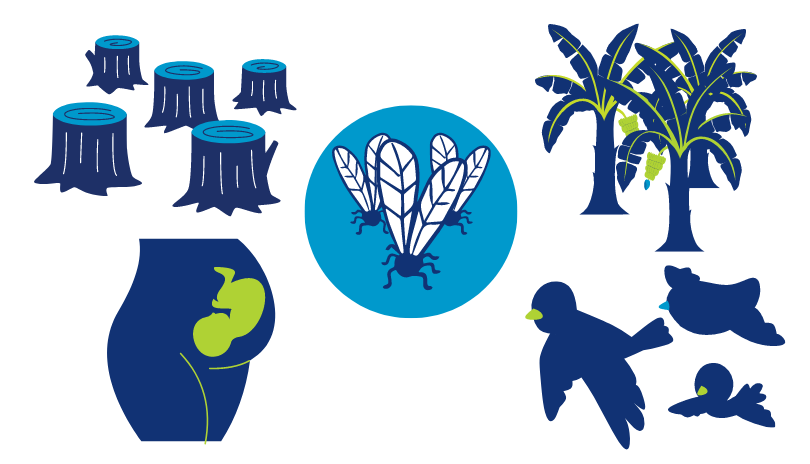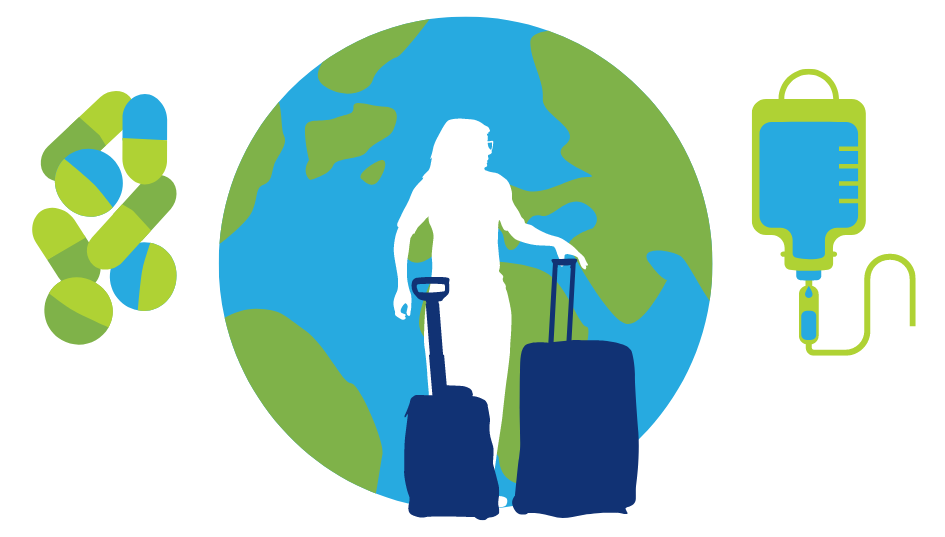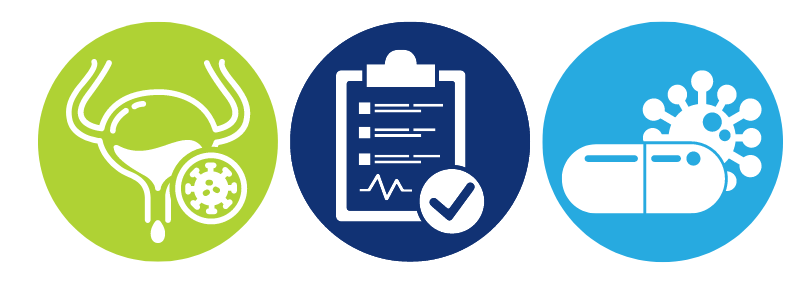
Bird flu is terrifying. Although avian influenza only rarely infects people, when it does, it kills half or more of them.
For the past 25 years, the number one avian influenza threat has been highly pathogenic H5N1 avian influenza. Like other influenza A viruses, it gets its name from the two important components of the virus – the hemagglutinin, or H designation, and the neuraminidase, or N.
Less important than the name is what the virus has been doing. Tens of millions of birds around the world have been infected, from poultry to wild migrating birds, and H5N1 is making friends with other viruses.
These virus “friendships” help the germs evolve. And the new versions of H5N1 are popping up in unexpected places. It was recently detected in Antarctica. It’s also infecting new animals, including sea lions, foxes, and otters.
Dr. Vijaykrishna Dhanasekaran, Associate Professor in the School of Public Health at Hong Kong University and head of the university’s Pathogen Evolution Lab, has been studying the startling changes in H5N1.
In this episode of One World, One Health, he chats with host Maggie Fox about his team’s most recent findings and what they mean for global efforts to control H5N1 bird flu.
Maggie Fox 00:01
Hello and welcome to One World, One Health where we take a look at some of the biggest problems facing our world. I’m Maggie Fox. This podcast is brought to you by the One Health Trust with bite-sized insights into ways to help address challenges, such as infectious diseases, climate change, and pollution. We take a One Health approach that recognizes that everything on this planet — the animals, plants and people, and the climate and environment — are all linked.
A great example of how the world is one planet is flu. It doesn’t really recognize borders, and it spreads from birds to mammals to people and back again. Migrating wild birds carry the virus with them and often spread it to domestic poultry flocks. People raising animals catch it and can spread it to other people. One of the most worrying strains of flu is H5N1 (avian influenza) first detected in China in 1996. It’s spread across the world and infected millions of domestic chickens and other poultry. As a result, hundreds of millions of domestic birds have been killed to try to stop the spread. It rarely infects people but when it does, it’s deadly.
H5N1 bird flu has infected just under 900 people globally in this century and killed just over half of them. Efforts to control it have failed, as it’s often spread by migrating wild birds as they cross the globe. Like most influenza strains, it can evolve and mutate quickly. And H5N1 is being found in an increasing array of mammals, including seals, ferrets, dogs, and cats. So, a dedicated group of scientists are watching this flu as it changes and spreads.
In this episode, we’re chatting with Dr. Vijaykrishna Dhanasekaran, head of the pathogen evolution lab and an associate professor at the Hong Kong University School of Public Health. He led a team that’s found some startling changes in the patterns of H5N1’s evolution. Vijay, thanks so much for joining us.
Vijaykrishna Dhanasekaran 02:05
Thank you for having me.
Maggie Fox 02:07
Tell us a little bit about the changes you’ve been seeing in avian flu.
Vijaykrishna Dhanasekaran 02:11
We’ve seen several changes that has occurred in the highly pathogenic H5 virus of avian influenza. One of the key things is there has been an intensification of the virus’s activity globally since 2021, which has led to mass mortality in wild birds and poultry as well as several incidental infections in mammals, which, of course, mass mortality events in animals, such as seals. We also found that the origins of these resurgence events — these massive resurgence events in wild birds — have changed. We usually observe these incidents, origins of these viruses, occurring mainly in Asia, which, our more recently, we see that these resurgence events are happening in Europe, and potentially in Northern Africa as well.
So essentially, there has been a geographic expansion. We also see changes in the ecology and the virology of the viruses. The genomic analysis that we did indicates that the, you know, the previous resurgence events, such as the 2016 one and all before that, occurred in Asia, where H5 is endemic in the region in poultry. However, in 2020–2021, we found some mutations that change the HA (hemagglutinin) structure and the attachment and the receptor binding of the virus as well.
And these viruses appear to have now reassorting in wild birds, or mixing gene segments that have existed in wild birds and they appear to be spreading much easier in wild birds. So essentially, there’s been an adaptation across the domestic birds, as well as the wild bird interfaces. Overall, I think that these changes in avian flu highlight the need for prioritizing elimination strategies in domestic birds, which have been the main source of these resurgence events. And that is quite crucial to limit future epizootics.
Maggie Fox 03:56
What do you think is driving these changes in the virus?
Vijaykrishna Dhanasekaran 04:01
We see that the viruses are acquiring an ability to spread among wild birds much more easier than previously observed. Whereas previously, even though there’s a wild bird resurgence event, that happens (usually, it lasts for a few months), and then it dies down, whereas in more recent resurgence events, we think continuous transmission of these viruses among wild birds, for the first time, it has spread to the Americas, especially it has been detected in North America in previous years. But this time, it appears to have continued to circulate for nearly two years. And most recently, the virus has been detected in Antarctica for the first time ever.
Maggie Fox 04:37
And can we talk a little bit about how these viruses swap genetic material to evolve so quickly? You mentioned the word earlier — reassortment. Can we talk a little bit about those processes?
Vijaykrishna Dhanasekaran 04:49
Well, absolutely. So, influenza viruses have a segmented genome, which means they have eight genes, and these are segmented in the sense that they are completely independent from each other. And they, each of these genes produce some proteins, one or more proteins. And so, because of this division into multiple segments when two different influenza viruses infect the same host and end up infecting the same cell, they have the ability to swap gene segments, and it can happen more commonly in various hosts. But there are some factors which I think can facilitate reassortment to happen.
The first is coinfection, which I just mentioned. The second is compatibility of the segments, which is under intense study at this moment, where if the virus, if the genes come together within the same virus particle and they can function together, then there’s a successful reassortment event, which means that it can transmit from one point to another. Another factor which affects the high rate of the assortment of wild birds is because of the high genetic diversity of influenza. Wild birds are the natural reservoirs and has a huge diversity of influenza viruses. So, this increases the likelihood of reassortment events.
So, reassortment actually plays a significant role in the rapid evolution of avian influenza unlike just mutations, (which) is one mechanism of evolution, where the shuffling of segments actually can lead to the emergence of new strains with novel combinations of genetic segments. And these new viruses can have unpredictable risk in different cultures, and that is a most important concern. It is also important to note that reassortment acts in different levels in different hops.
I mentioned that wild birds have a very high diversity and there’s lots of reassortment. Similar thing happens in swine influenza, where we have lots of viruses circulating in pigs. But reassortment happens so much lesser in humans, because we have a limited number of seasonal influenza viruses circulating in humans.
Maggie Fox 06:37
So, in other words, there’s an animal, it’s infected with multiple different strains of a virus. And these viruses, I think I’ve heard it described as viral sex as the equivalent, they are actually trading little pieces like here, I’ll trade my arm for your arm, and it will make you a better virus.
Vijaykrishna Dhanasekaran 06:53
That’s exactly right, actually. I mean, so one of the very famous examples is the previous pandemics, not the 2009 one, but the previous pandemics in 1968 and the 1957 virus. And these viruses, which caused a pandemic, essentially had many of the gene segments from previously circulating seasonal influenza viruses, and some genes which were newly introduced into the human population.
And that’s one of the biggest concerns with influenza ——, and we don’t need all the gene segments. The virus does not need (to) transfer all the gene segments and cause (a) pandemic. All we need is a human seasonal strain to acquire the H5 gene (the H5HA gene). And that readily generates a highly pathogenic but still virus which is readily adapted to humans.
Maggie Fox 07:41
Can you tell us a little bit about the interactions between wild and domestic birds around the world?
Vijaykrishna Dhanasekaran 07:47
Yeah. So, interactions between wild and domestic birds actually plays a very crucial role in the ecology and transmission of avian influenza viruses. Some of the key points of interactions are they could be a contact in shared environments, such as wetlands, agricultural areas, and live bird markets. It depends on the region as well. For example, in Asia and Southeast Asia, there’s lots of interactions with domestic poultry in all of these places — in wetlands, where birds and ducks are reared in these wetlands, there are several agricultural areas where wild birds arrive, there’s also live bird markets, which play a crucial role.
These shared spaces provide opportunities for direct and indirect contact between the bird populations. Many wild bird species migrate across long distances, and therefore, it creates opportunities for interaction with wild birds. Wild birds, particularly aquatic birds, are considered as natural reservoirs so they can carry viruses without any signs and symptoms. Whereas once it transmits to poultry, it can actually increase the amount of viruses that shed because these birds are getting sick. And that’s another way where these infections can actually amplify the viruses that are circling wild birds by poultry.
Finally, environmental contamination — wild birds can shed viruses in their feces, which can contaminate the environment, including water sources that are used for the poultry industry. Then, environmental contamination actually contribute to the indirect transmission of avian influenza between wild and domestic birds. So therefore, taking all this into consideration, understanding and monitoring the interaction between these birds is important for airway surveillance and control. And by studying these interactions, we can actually develop better control strategy.
Maggie Fox 09:25
You mentioned that H5N1 had recently been found in Antarctica for the first time. So, how did the wild birds carry (the viruses)? They fly there and I guess, they’re pooping, right? Is (this) what you’re saying?
Vijaykrishna Dhanasekaran 09:36
Absolutely. I mean, so, I mean, most of the transmission in birds happens where —— the gut, I mean, because viruses are infecting primarily the gut of these birds. And it’s a gastro infection in these birds and they, basically, are shed by their feces and they can actually get infected when the other birds consume this water.
Maggie Fox 09:55
Asia has always been the traditional hotspot for avian influenza emergence for various reasons that you’ve mentioned. But now you said you’re seeing Europe playing a bigger role?
Vijaykrishna Dhanasekaran 10:05
That’s right. Study really suggests that Europe is actually playing a bigger role in the emergence and spread of these viruses, particularly the highly pathogenic H5N1 virus. Asia was traditionally considered a hotspot for avian influenza emergence and we saw a shift in the epicenter of H5 viruses beyond Asia. And this has actually led to this because of the increasing persistence in wild birds. And we have also found that these viruses have evolved the assortment in wild birds in Europe, and still undergo further reassortment in these viruses. So, we actually have been pointed potentially mid to Eastern Europe region where these viruses could have potentially emerged. And we exactly couldn’t pinpoint the host in Europe yet. But we think that it could have been a mix between domestic and wild birds.
Maggie Fox 10:52
So, we can’t pinpoint what’s happening in Europe that’s helping the virus evolve better there.
Vijaykrishna Dhanasekaran 10:58
That’s right. I mean, so, Europe arguably has one of the best avian influenza virus surveillance, but it is targeted towards certain countries who do a much better job than other countries in Europe, especially, I think the avian surveillance is much lower in Eastern European countries where I don’t think we continually monitor H5N1 viruses or other viruses in these poultry systems and the evolution or the emergence of this latest H5N1 virus, which caused this huge resurgence event, happened really quickly.
And it’s only after the resurgence event happened, people start collecting the samples over time. So, we can’t really quite distinguish exactly how much of the interaction is happening between wild birds and domestic birds. And just like what I mentioned previously, there is an active study which is undergoing at this moment, and I think we should have a much better idea in the near future.
Maggie Fox 11:45
So, what do your findings mean for agencies that are trying to control the spread of avian influenza?
Vijaykrishna Dhanasekaran 11:53
I can think of several implications for agencies actually and organizations involved in controlling. First is enhancing surveillance. Our study clearly emphasizes the need for enhanced surveillance efforts not only in traditional hotspots, such as in Asia, but also in other regions, including Europe and Northern Africa, many other regions now that the virus is spreading globally. It also shows that we need international cooperation, given the global nature of the virus’s spread.
We also think that we need more targeted control measures rather than the current control measures (that) are aimed to minimize the mortality burden in the poultry industry mainly, rather than an elimination focus of removing the virus completely. So, we have evidence from Hong Kong, for example, and some other Southeast Asian countries as well, where they use vaccination plus various other measures to actually eliminate the highly pathogenic avian influenza virus and those things must be adopted quite readily.
We also need some sort of research and development into making the vaccines much better, more potent vaccines, which can actually limit transmission rather than just reduced mortality of the virus. And we also, of course, need a risk communication, effective risk communication, based on which underpinned the surveillance.
Maggie Fox 13:05
Are you seeing any greater risk for people (with) these changes that you’re observing in the virus?
Vijaykrishna Dhanasekaran 13:11
Okay. So, the avian influenza, it does pose a potential risk to human health, especially the highly pathogenic avian influenza viruses. —— of people mainly arises through close contact with infected birds, particularly in situations where biosecurity measures are really lacking or very low. And people you know, working in markets, labor markets, and poultry industry who have very close contact with these birds.
However, it’s important to note that human to human transmission of avian influenza viruses is quite rare. And it’s typically just limited to very close contacts, and it’s been extremely rare, and there’s no evidence. So, there is no sustained human to human transmission of avian influenza viruses yet. However, because of the potential to undergo genetic changes leading to increased transmissibility to humans, I think, the risk of reassortment and a potentially pandemic virus emerging is always there.
Maggie Fox 14:03
Vijay, thank you so much for joining us and explaining all this to us.
Vijaykrishna Dhanasekaran 14:07
Well, thank you so much for having me.
Maggie Fox 14:10
Listeners, thank you for joining us too. If you enjoyed this podcast, please share it. You can learn more about this podcast and other important topics at onehealthtrust.org and let us know what else you’d like to hear about at [email protected]. Until next time.
Guest

Dr. Vijaykrishna Dhanasekaran is an Associate Professor in the School of Public Health (SPH) at Hong Kong University (HKU). Before joining SPH, he was faculty at Duke-NUS Medical School Singapore and Monash University Australia. He has a BSc, MSc and MPhil from University of Madras, and a PhD in microbial ecology and evolution from HKU.
Dr. Dhanasekaran is head of Pathogen Evolution lab. His primary research focus is on the genomic evolution and epidemiology of rapidly evolving viruses such as SARS-CoV-2, influenza, RSV, and others. By conducting epidemiological studies across Asia-Pacific, and through integration of genomic datasets with clinical and immunological data, his group aims to advance understanding of the genetic and ecological factors that determine the emergence and distribution of infectious diseases. Dr. Dhanasekaran has published over 100 research articles with >10,000 citations.
Credits
Hosted and written by Maggie Fox
Special guest: Vijaykrishna Dhanasekaran
Produced and edited by Samantha Serrano
Music composed and sound edited by Raquel Krügel
Transcript edited by Dipyaman Sengupta







